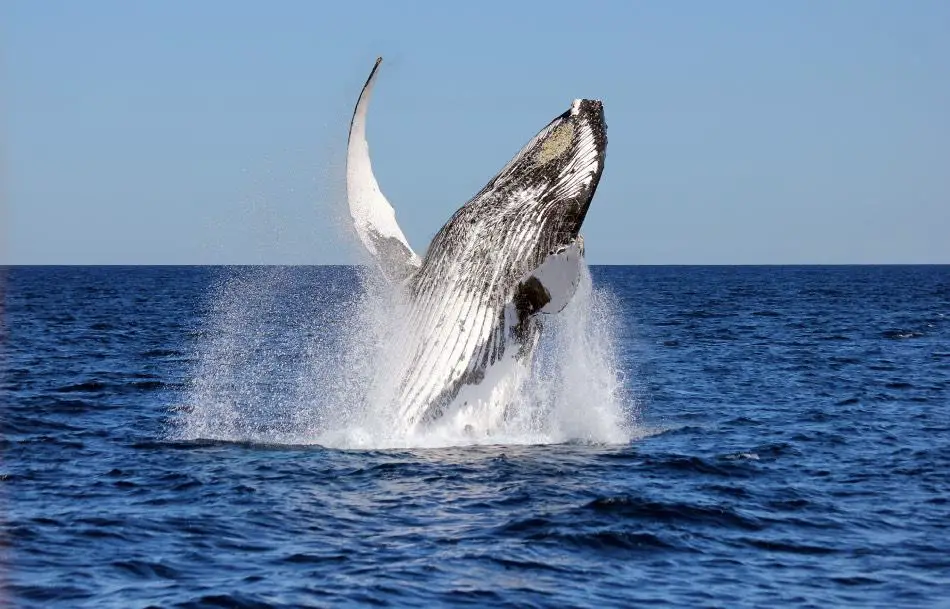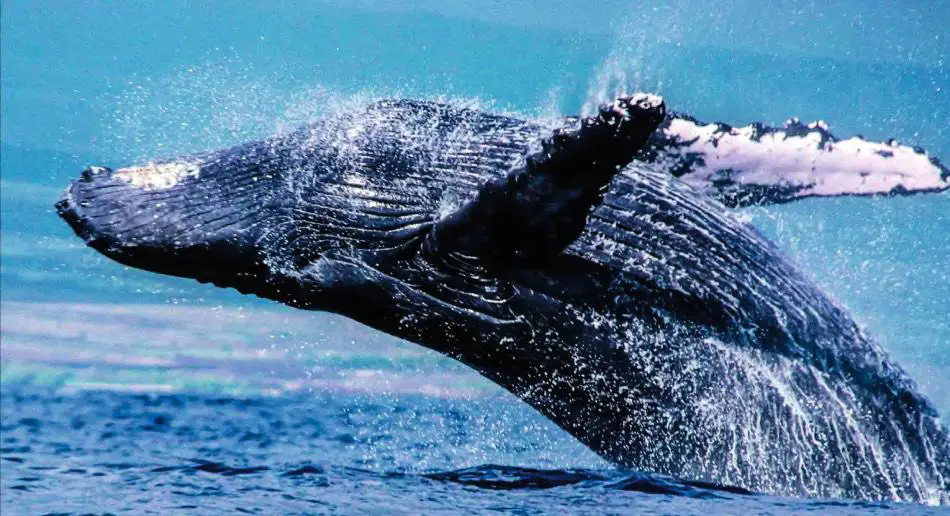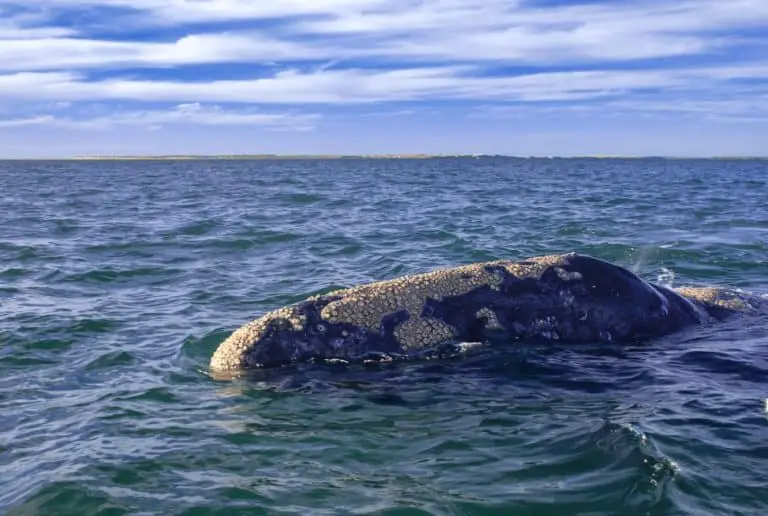Why do whales Breach? 6 Main Reasons.
Breaching behavior is a spectacularly energetic and visually impressive mode of diving in which the whale propels itself out of the water with its tail.
Animals such as dolphins, seals, sea lions, and even humans can breach. Still, only two groups of animals regularly perform this behavior – baleen whales (blue, humpback, minke, rorqual, and Bryde’s whales) and sperm whales.
Most of the time, breaching occurs when whales try to get out of the water in response to an external stimulus such as a predator or extreme weather conditions.
It is also known that breaching can be used as a means of intraspecific social communication between whales in the form of a threat display.
In this post, we will focus on why baleen whales breach – specifically blue and humpback whales.
These species are both found in Australian waters and have been observed to breach occasionally in response to an external stimulus, but it is not always clear why they breach.
Here are a few possible reasons:
1) To escape the water
This is probably the reason most people give when they see a whale breach.
However, it is unlikely that breaching response to an external stimulus is always directed toward getting out of the water. It seems more likely that whales sometimes breach because it might be exciting and fun! (Hey, if humans can do it, why not whales!)
2) For play

Although there is little research on breaching as a form of social communication, humpback and blue whales may breach to interact with members of their own species.
Blue and humpback whales form large groups called ‘schools’ or ‘pods’ and may breach to communicate with other whales.
These schools can be comprised of anywhere between two and nine blue whales or twenty to over a hundred humpback whales in the wild.
Each whale has its own distinctive call that is used for communication within its group, and it could be possible that breaching is used to separate out the individual members of a pod.
Moreover, breaching may also be an attempt by individuals to gain the attention of other whales in their group. In these two scenarios, breaching would increase social cohesion and could facilitate mating or feeding opportunities.
3) As a courtship display/attempted mating behavior
A third and more speculative reason for breaching is as a courtship display.
Blue whales are one of the largest animals on earth and can reach up to 30 meters in length.
They may breach to impress other members of the opposite sex or simply as an act of showing off!
Baleen whales are generally not monogamous, so another possibility is that breaching could also be used as a type of sexual display to attract mates.
At this stage, the evidence for this is weak, but it would explain why humpback whales make most of their breaches during the mating season.
4) To feed
There are many species of krill in Antarctic waters. Krill look similar to shrimp, but they have an exoskeleton rather than an internal skeleton like a shrimp does.
Humpback and blue whales may breach because this form of diving allows them to target their prey and feed more efficiently.
Breaching whales could reach up to 5 meters above the surface of the water and dive back down repeatedly to catch their prey in a way that is not possible while diving without breaching.
This feeding method may save whales a lot of energy and time by efficiently targeting krill aggregations without spending much energy hunting for individual prey.
5) To get rid of parasites.
Humpback whales are known to breach in the presence of fish-eating killer whales. However, it is unclear if these breaches are directed toward predators or if they are actually attempting to dislodge small fish called ‘lice’ from their skin.
On the other hand, blue whales may breach to rid themselves of lice and other ectoparasites.
If breaching responds to external stimuli, whales may be flushing parasites away from their bodies by exposing them to saltwater on the top of their breach.
6) To rid themselves of unwanted material in general.
In many marine species, whales are known to ingest plastic waste or other material they mistake for food.
Blue and fin whales can swallow over forty kilograms of material each day!
In some cases, these filter-feeding whales will ingest materials such as plastic or metal fishing lines that can become tangled in their baleen plates.
Whales may also breach to rid themselves of other types of unwanted material that they accidentally swallow.
Although breaching is not often observed in response to external stimuli, it appears that some whales do breach to release material from their bodies.
However, this may not be the case for humpback whales because there is very little bycatch (seafood) in Antarctic waters. It also appears that blue and fin whales are more likely to breach to rid themselves of unwanted material.
In summary, there are several possible reasons for breaching behavior in whales. Some species may breach because it is an efficient way to feed their prey, while others may use breaching as a display or courtship.
However, more research is needed before these theories can be confirmed.
FAQ:

Why do whales breach near boats?
It is not clear why whales breach near boats, but it may be because they are more likely to have parasites on their skin. Whales that breach near ships may already be sick due to high parasite loads or other reasons.
Scientists don’t know if breaching could be detrimental to the health of whales, so breaching should not be taken lightly. If you encounter a breaching whale, it is best to approach with caution—make sure the area around the boat is clear and keep a reasonable distance.
In some cases, whales may come close to boats or even stand on their backs while they breach. If this happens, it is best to take pictures quickly before heading to safety.
Do whales enjoy breaching?
Whale watching can provide tourists with an exciting and memorable experience, but whales themselves do not enjoy these excursions. Many researchers believe that breaching results from stress or discomfort caused by boats near the areas where whales normally breach.
The noise created by motors may also contribute to an uncomfortable environment for whales.





